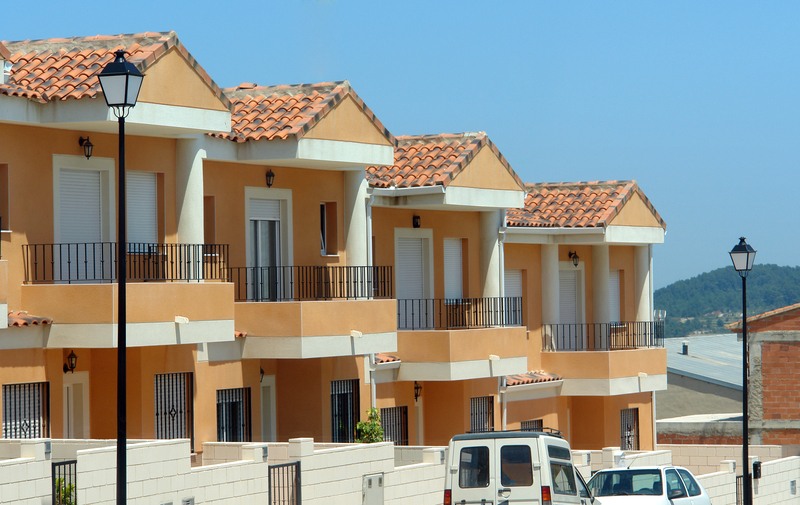
The Spanish real estate market continues to demonstrate remarkable resilience. Despite the Easter holidays in April, an impressive 54,318 homes were sold, according to data released by the INE (National Statistics Institute) on Thursday. Notably, this volume surpassed last year’s figures, marking the best April in 17 years. Falling interest rates continue to fuel a market that keeps growing, even as soaring prices present a challenge for many seeking to acquire a home.
The volume of property acquisitions increased by 2.3% in April 2025 compared to the same month in the previous year. Ferran Font, spokesperson for the real estate portal pisos.com, explained: “With these figures, we are already in the fourth month of 2025 in a situation not seen since the last real estate bubble. This is explained by a particularly active demand, interested in taking advantage of the situation, with the possibility of obtaining a mortgage under very attractive conditions.” Indeed, one has to go back to 2008 to find an April with more activity. At that time, 17 years ago and still in the final throes of the real estate bubble, 54,801 transactions were registered – just about five hundred more than this year.
Interest Rate Cuts Fuel Spain’s Housing Boom
In a completely different scenario from back then, the monthly sales volume has now exceeded 50,000 transactions per month for eight consecutive months – a phenomenon not seen since the real estate bubble. This momentum is largely driven by the decline in interest rates, which has improved access to financing for those seeking a mortgage. “After the change in the mortgage cycle triggered by the de-escalation of interest rates, buyer optimism and confidence in the market, along with an increase in savings rates and more attractive mortgage conditions with a falling Euribor, have given 2025 tailwinds,” explained María Matos, head of studies at Fotocasa.
The European Central Bank (ECB), led by Christine Lagarde, reversed its monetary policy stance in mid-last year to revive the market. Since then, eight rate cuts have been made, seven of them in a row, bringing interest rates back down to 2% – a level not reached since November 2022. Simultaneously, the Euribor, which is the benchmark for most variable-rate mortgages in Spain, has fallen to around 2.1%, and banks have adapted to improve their fixed-rate offerings.
Moderate Growth in April: A Sign of Normalization?
Despite the market’s strength amidst this favorable climate, the 2.3% growth recorded in April is significantly more moderate than the increases in previous months. The Federation of Real Estate Companies Associations (Fadei) commented: “The normalization of sales figures in April responds to the almost record-breaking data of previous months and the logical fluctuation of the market, which could return to a double-digit increase path in the following months.”
In March 2025, home purchases increased by 40.6% compared to the same month in the previous year, with a total of 62,808 transactions – the second-best monthly figure in the historical series since mid-2007. This strong increase was primarily due to the discrepancy in the timing of Easter holidays. On a monthly basis, April this year saw 13.5% fewer operations closed than in March. María Matos emphasized: “It must be taken into account that the Easter celebrations caused many operations to be paralyzed for several days.”
New Builds and Resale Properties: Dynamics in the Spanish Housing Market
Since July last year, sales have increased continuously for ten months compared to the previous year, although property prices have also continued to rise. By April 2025, 237,458 transactions have been carried out this year, 15.9% more than in the same period of 2024, making it the best first quarter since 2007. “If this pace is maintained, 2025 could become the best year since 2007, when 775,000 transactions were reached,” predicts Matos, who describes the current real estate market as a “golden age.” However, she warns that the “oversize” of demand will sustain the upward trend in prices throughout the year. Geopolitical instability also reinforces the perception of housing as a safe haven, which could translate into a recovery in demand.
Of the 53,091 properties sold in April, 21% were new build homes. There were 11,410 transactions involving brand new properties – 7.2% more than a year ago and the highest figure for a fourth month of the year since 2010. “It is a very significant volume. This typology is experiencing great intensity, as new homes meet the most demanded requirements by buyers. However, if demand remains so strong, we could face a serious problem of rising prices,” warns the Fotocasa spokesperson. The purchase of resale properties remains the majority, accounting for 79% of transactions in April, with a total of 42,908 transfers, a 1% increase compared to the same month in 2024. This slight increase was enough to set a new record for the month of April.
Regionally, the situation in April was heterogeneous. Ten regions recorded an increase in home sales and purchases compared to the previous year, led by La Rioja (+25.2%), Castile and León (+23.5%), and Extremadura (+23.2%). In contrast, economic activity decreased in the Canary Islands and the Balearic Islands (–19.3% and –11% respectively). Asturias, Aragon, Cantabria, Castile-La Mancha, and Andalusia also showed negative figures, albeit with more moderate declines. In absolute terms, Andalusia was the community with the highest number of transactions (11,063), followed by the Valencian Community (8,381), Catalonia (8,156), and Madrid (6,604).



